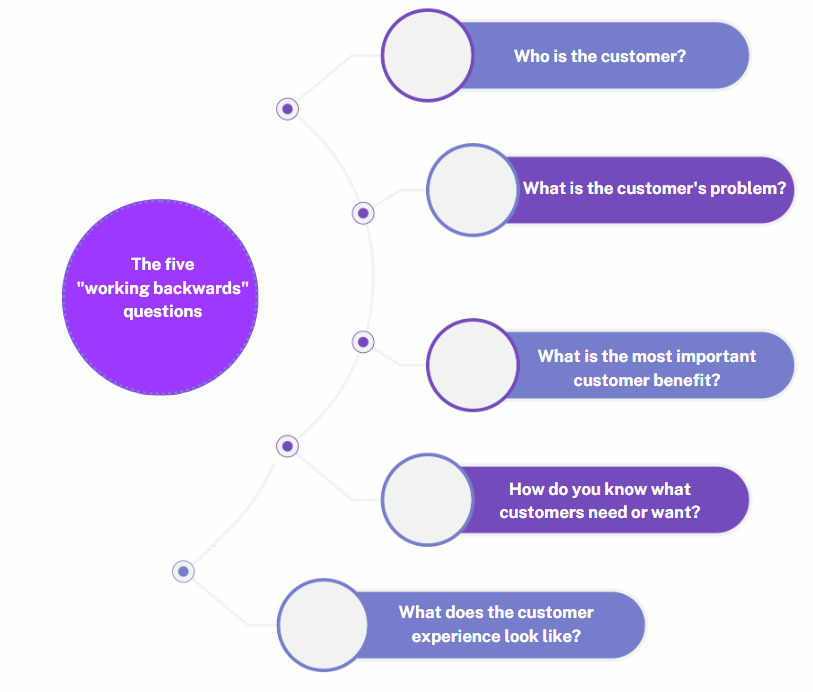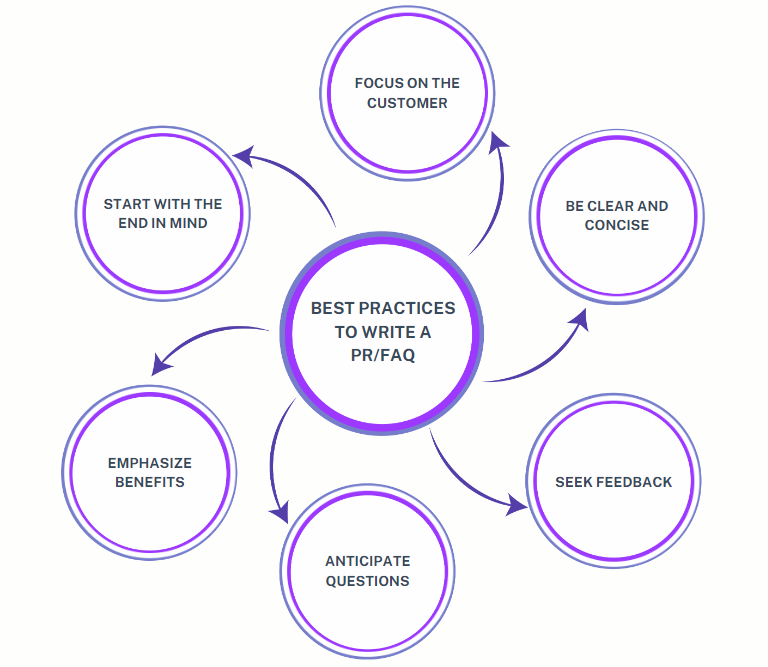Imagine the ideal scenario of launching a product. A product that not only meets market needs but exceeds customer expectations right from day one. That’s the power of the PR/FAQ method. It’s an innovative approach pioneered by Amazon to revolutionize product development.

Today, you’ll explore how this method can transform your product planning process, as well as how it makes you more customer-focused and results-oriented.
The PR/FAQ (press release/frequently asked questions) is a strategic tool used in product management. It helps you to envision and define a new product before it’s developed. The method helps teams focus on the customer’s perspective right from the very beginning:
This forward-thinking approach not only enhances teamwork, but also sharpens the product’s market fit from the outset. But it’s more than just a document; it’s a strategic blueprint that guides the product development process by keeping customer needs and product goals at the forefront.
“Working backwards” refers to a set of questions that help you formulate the backbone of the strategy. Think of it as a customer-centric approach that you can use to guide product development. These five key questions ensure that your product team focuses on the actual customer needs when building every component of the product:

Not only that, but these questions also help you determine the product’s ultimate value proposition. The questions ask:
The “working backwards” strategy starts with the customer and works its way back to the product itself. This method is pivotal in ensuring that every product developed is deeply rooted in serving real customer needs and solving genuine problems.
The primary objectives of this approach are:
As a product manager, the process of product development must be rooted in reality from the outset. If teams can create products this way, securing a competitive edge in the marketplace becomes easy.
An internal press release is a pivotal component of the PR/FAQ method. It acts as a mock announcement for a product’s launch. It’s designed to articulate how the product will be perceived by customers. It also helps you to align the development team’s vision with the customer’s needs.
Here’s how you can craft an effective internal press release:
The key essence of the press release is not simply to announce a new cool product. It’s to convince your team and stakeholders about the product’s potential impact.
The PR/FAQ isn’t limited to serving as a product development supporting document. It’s also a powerful tool for driving product innovation. The power lies in the approach of focusing on the end user’s needs. The goal is to enhance the ultimate utility of a product.
Here are some examples of its application:
The PR/FAQ method promotes an innovative culture in product-led companies. If you utilize this method to its full potential (like Amazon did), you can deliver products that redefine markets.
The PR/FAQ method and traditional product requirements documents (PRDs) are both crucial tools in product development. The key difference is that they serve distinct purposes and follow different approaches.
As a product manager, you need to develop an understanding of their differences to set the standard document for your team and the product strategy:
Both PR/FAQs and PRDs are essential for guiding the development of a product. Although, they cater to different stages of the process. PR/FAQs help in validating the product’s relevance and market demand and PRDs act like a roadmap for developing the product.
Creating a compelling PR/FAQ document is an essential piece of the entire process. With a well-written document, you’re able to successfully communicate the vision of the new product (both internally and potentially to stakeholders).
The document should capture three main aspects: what the product is, who it’s for, and why it matters. Keep the tone clear and engaging:

Here are some key tips for writing a compelling one:
It’s clear that this approach can be incredibly beneficial in aligning product development with customer needs (and market demands). By working backwards from the customer’s perspective, teams can create products that truly resonate with the end users.
The following key pointers will prove useful for your day-to-day reference:
This customer-centric method proves invaluable in creating products that are viable, reliable, and also highly desired in competitive markets.
Featured image source: IconScout
LogRocket identifies friction points in the user experience so you can make informed decisions about product and design changes that must happen to hit your goals.
With LogRocket, you can understand the scope of the issues affecting your product and prioritize the changes that need to be made. LogRocket simplifies workflows by allowing Engineering, Product, UX, and Design teams to work from the same data as you, eliminating any confusion about what needs to be done.
Get your teams on the same page — try LogRocket today.

Suvrat Joshi shares the importance of viewing trade-off decisions in product management more like a balance than a compromise.

Great product managers spot change early. Discover how to pivot your product strategy before it’s too late.

Thach Nguyen, Senior Director of Product Management — STEPS at Stewart Title, emphasizes candid moments and human error in the age of AI.

Guard your focus, not just your time. Learn tactics to protect attention, cut noise, and do deep work that actually moves the roadmap.